Abstract
Medical terminologies continue to grow in scope, completeness and detail. The emerging generation of terminology systems define concepts in terms of their position within a categorical structure. It is still necessary, however, to access and represent the concepts using everyday spoken and written language, which introduces both lexical and semantic ambiguity. This ambiguity can have a negative impact on both selectivity and recall when it comes to associating free-form textual phrases with their coded equivalent. Lexical ambiguity issues can often be addressed algorithmically, but semantic ambiguity presents a more difficult problem. A common solution to the semantic problem is to associate many different representational permutations with a given target concept. This approach has several drawbacks. An alternate solution is to build separate synonym tables that can serve as permuted indices into the terms representing the underlying concepts. A potential shortcoming of this approach, however, is a further reduction in the lookup selectivity. One possible source of loss of selectivity could be "meaning drift"--the gradual change in meaning that can be introduced when following a chain of nearly synonymous words. We posited that organizing synonyms into separate "meaning clusters" might reduce this loss in precision, but the results of this study did not bear that out.
Full text
PDF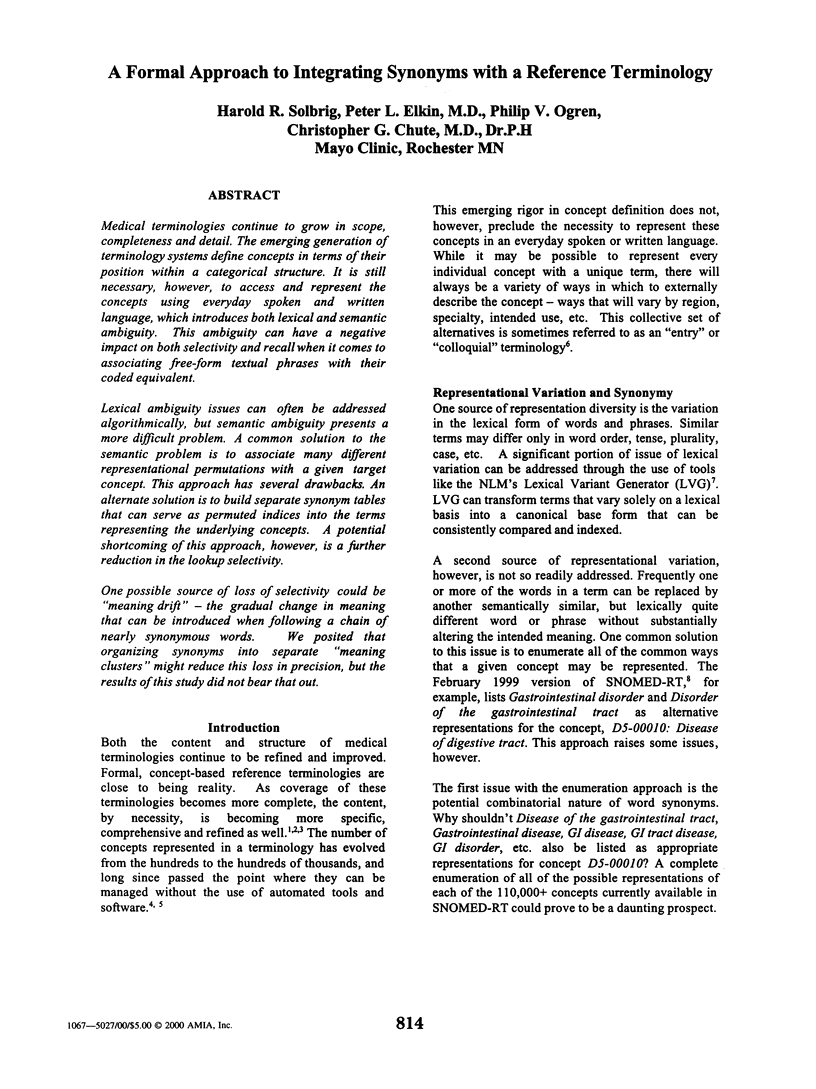
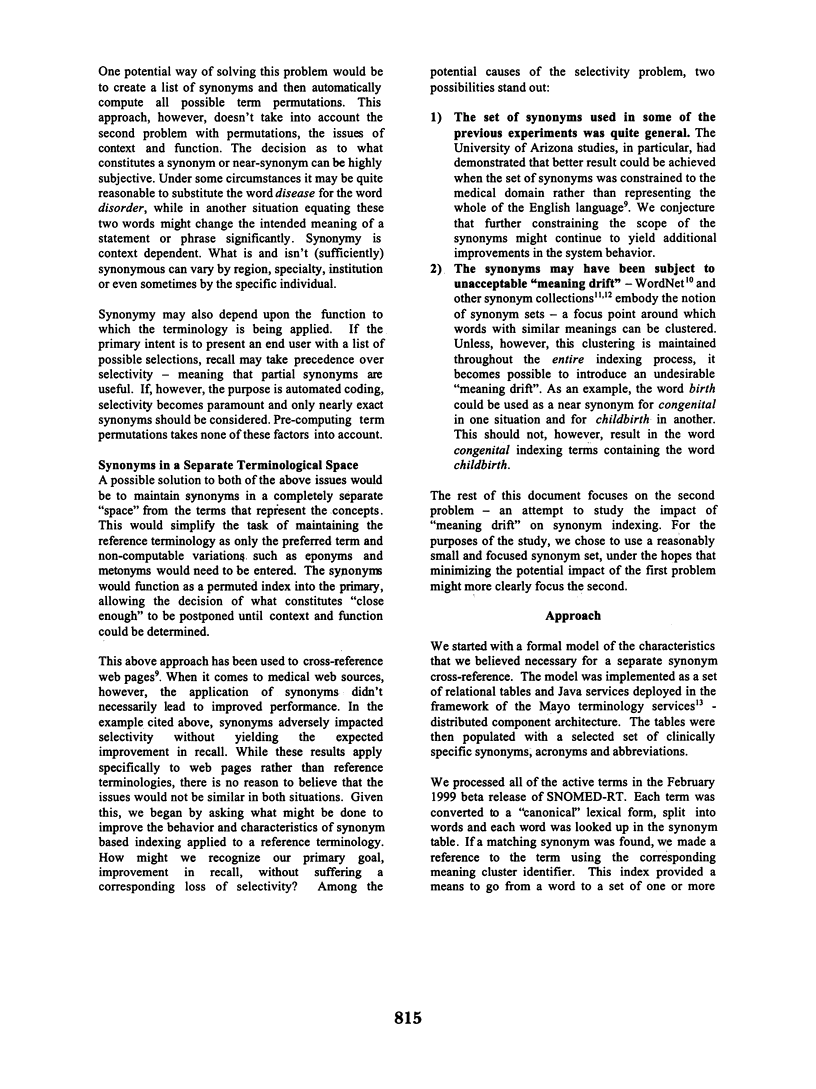
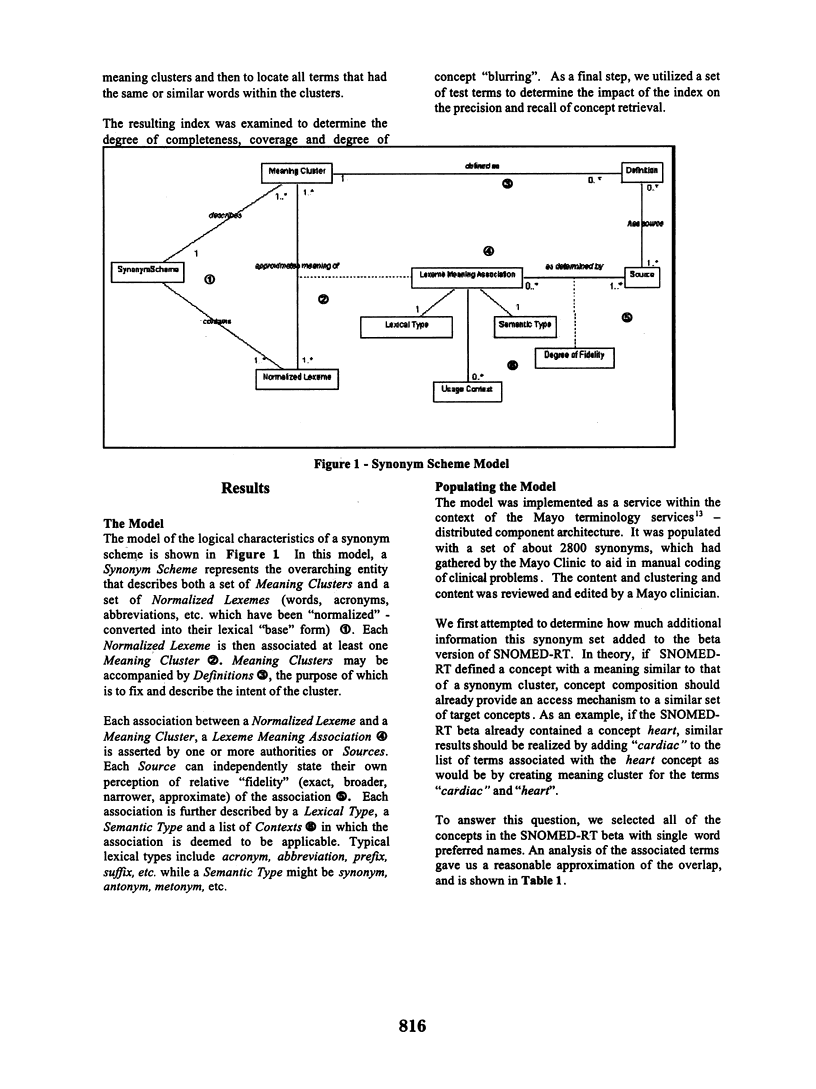
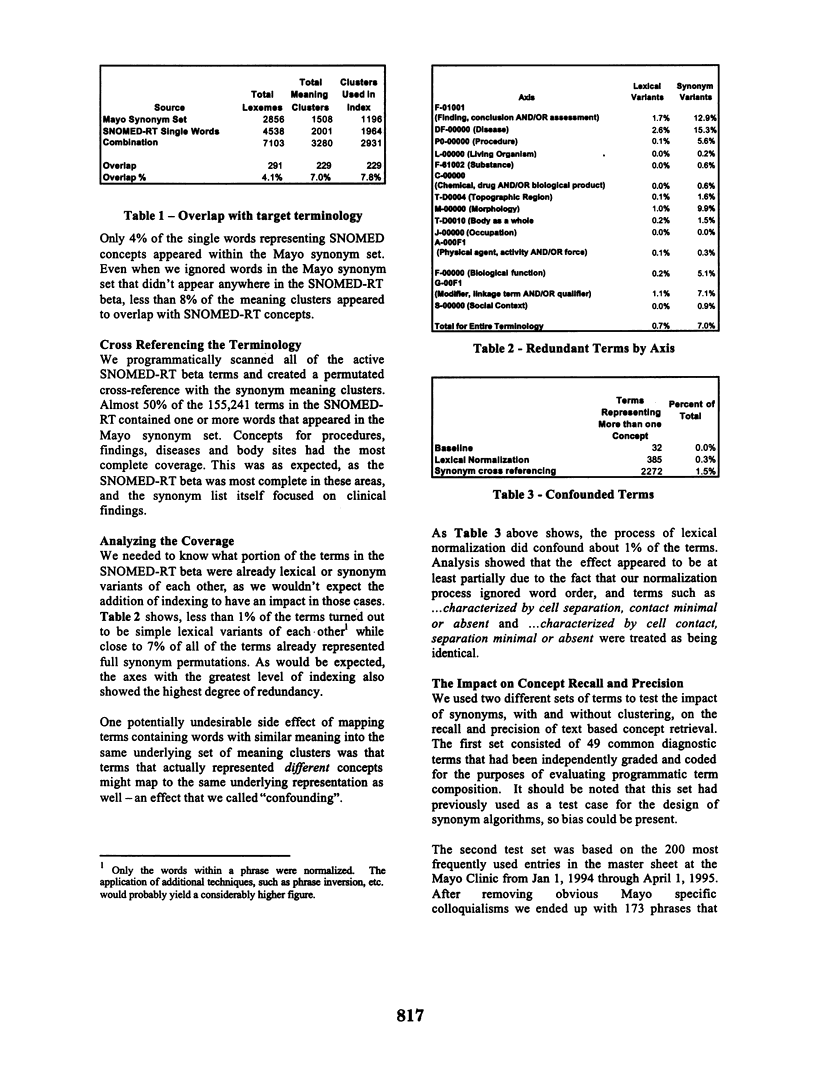
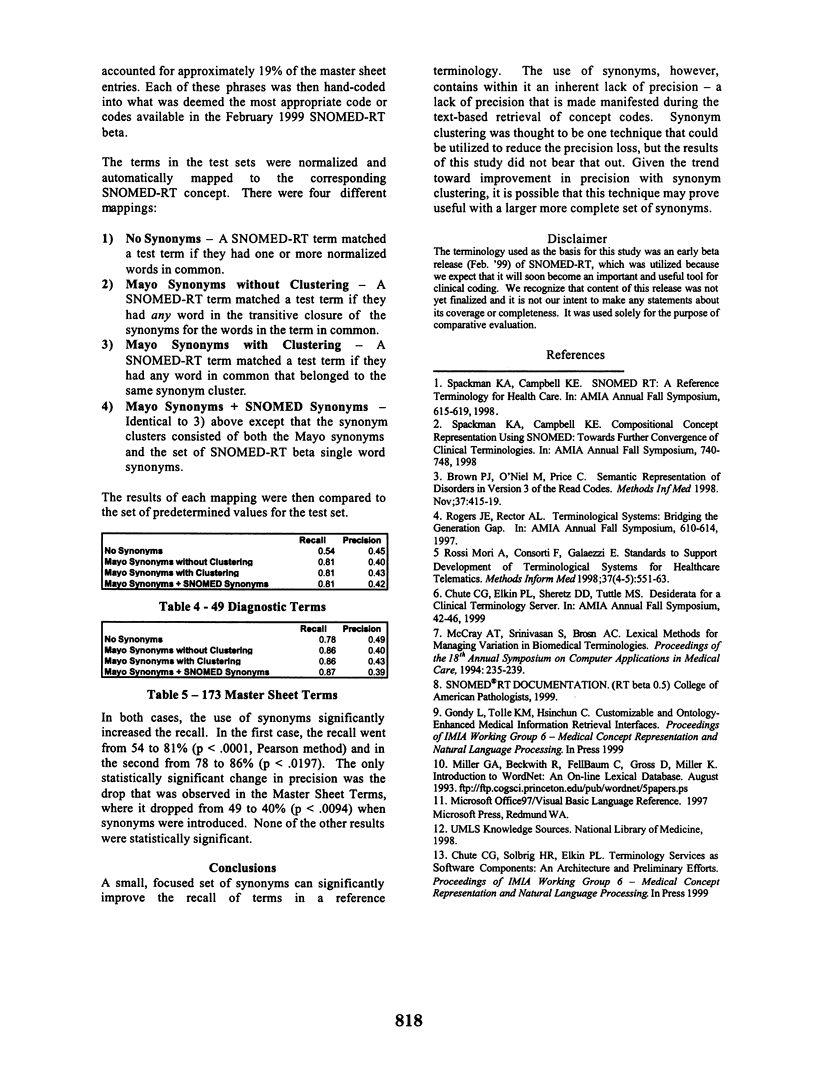
Selected References
These references are in PubMed. This may not be the complete list of references from this article.
- Brown P. J., O'Neil M., Price C. Semantic definition of disorders in version 3 of the Read Codes. Methods Inf Med. 1998 Nov;37(4-5):415–419. [PubMed] [Google Scholar]
- McCray A. T., Srinivasan S., Browne A. C. Lexical methods for managing variation in biomedical terminologies. Proc Annu Symp Comput Appl Med Care. 1994:235–239. [PMC free article] [PubMed] [Google Scholar]
- Rossi Mori A., Consorti F., Galeazzi E. Standards to support development of terminological systems for healthcare telematics. Methods Inf Med. 1998 Nov;37(4-5):551–563. [PubMed] [Google Scholar]


